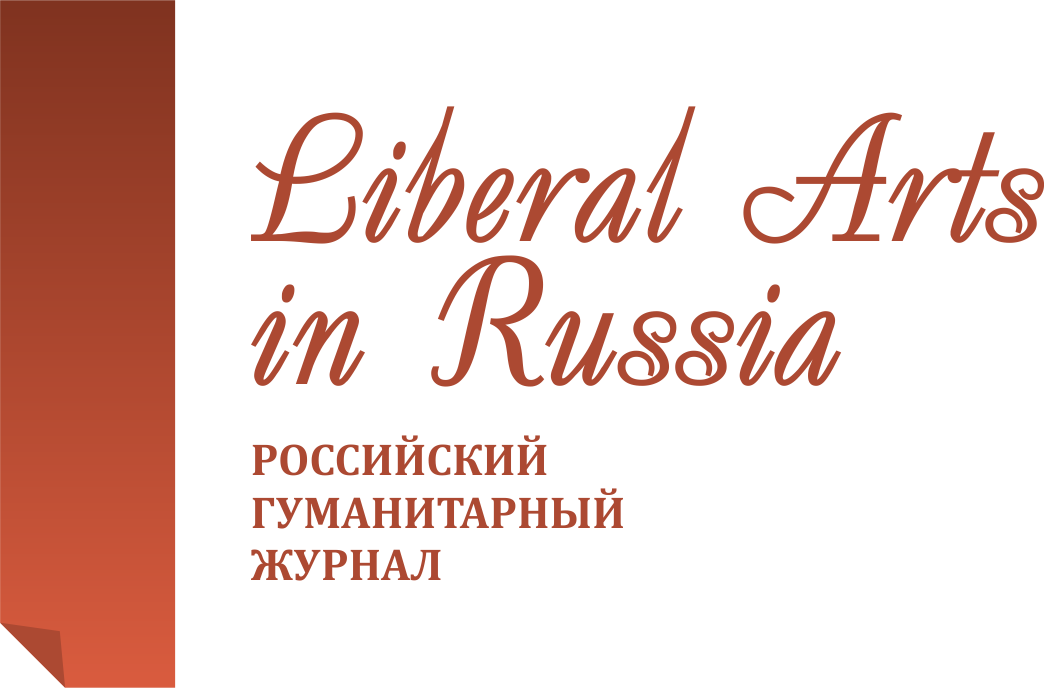Evaluation of Colour Lexemes and its Actualization in the Slavic Languages
Liberal Arts in Russia. 2013. Vol. 2. No. 4. Pp. 361-367.
Get the full text (Russian) Email: svkezina@gmail.comAbstract
The article discusses patterns of evaluation semantics development in colour lexemes, primarily basic color terms, such as red, white, black, yellow, etc. The most typical tendencies of secondary meanings developement connected with the estimation semantics are revealed on the material of dialectal varieties and literary sources of Russian and other Slavic languages. It was found that in the history of the language colour semantics was generated later than evaluative, sometimes it “merged” with evaluative semantics so firmly and organically that this created the impression that the colour determined the quality of the object. Color lexemes coherently implement polar evaluation (positive and negative) that are “selected” by the language, thus the law of word semantic gene pool realization probability appears. In accordance with the law components of the semantic structure of the word (semes), that have naturally developed in the course of its evolution, probabilistically realize themselves in one or in different languages, which implies a natural “turning on” (dominance) and “off” (recessiveness) of semes in a given period of language development. According to this law colour lexemes actualize evaluative meanings differently in a history of different languages. It is supposed that evaluation passed through several stages of development: significant objects of the real world were evaluated at thirst and became the latest standards for colour designations, then colour of significant object were transferred on humans for nominating their qualities (Russian dial. Bogatie “fire smoldering under the ashes” – bagryany “colour of fire smoldering under the ashes” – bagryanitsa “precious fabric of crimson colour, clothes from such fabric” – bagryanorodny “royal blood person”, Russian dial. zel', zelye “edible herb” – zeleny “grass colour” – zeleny “inexperienced, immature”). Comparison of examples from Russian and other Slavic languages shows in some cases the similarity of ways of development and actualization of semantics, this facts allows to suppose that either same ways of generation of meaning in different languages has taken place or that the Slavic “legacy” common for the languages has influenced them, that in both cases confirms the law-governed generation of semes in the process of semantic evolution of the word.
Keywords
- • colour terms
- • semantics
- • evaluation
- • Russian language
- • Slavic languages
References
- Arkhangel'skii oblastnoi slovar' [Arkhangelsk Regional Dictionary]. No. 1–11. Moscow: Izd-vo Mosk. un-ta, 1980–2001.
- Buslaev F. Dogadki i mechtaniya o pervobytnom chelovechestve [Guesses and Dreams about Primitive Humanity]. Moscow: 2006.
- Dal' V. I. Poslovitsy russkogo naroda [Proverbs of Russian People]: V 2 t. T. I–II. SPb.; Moscow: Izdanie M. O. Vol'fa, 1879.
- Dal' V. I. Slovar' zhivogo velikorusskogo yazyka [Dictionary of the Living Great Russian Language]. T. I–IV. Mos-cow: Russkii yazyk, 2000.
- Kondratenko M. Leksika narodnoi meteorologii. Opyt sravnitel'nogo analiza slavyanskikh i nemetskikh naimeno-vanii prirodnykh yavlenii [Lexis of Folk Meteorology. Experience of Comparative Analysis of Slavic and German Names of Natural Phenomena]. Munchen: Verlag Otto Sagner, 2000.
- Mel'nichenko G. G. Kratkii yaroslavskii oblastnoi slovar', obaedinyayushchii ranee sostavlennye slovari (1820–1956) [Yaroslavl Regional Concise Dictionary uniting previously compiled dictionaries (1820-1956)]. Yaroslavl: Yarosl. obl. tip., 1961.
- Naimenovaniya tsveta v indoevropeiskikh yazykakh: Sistemnyi i istoricheskii analiz [Color Names in Indo-European languages: System and Historical Analysis]. Ed. A. P. Vasilevich. Moscow: KomKniga, 2007.
- Pavlyuchenkova T. A. Prilagatel'nye so znacheniem tsveta v yazyke russkikh bylin: Avtoref. dis. ...kand. filol. nauk. Moscow: 1984.
- Rukopisnyi leksikon perv. polov. XVIII v. [Handwritten Lexicon of the First Half of 18th Century]. L.: Izd-vo LGU, 1964.
- Slovar' drevnerusskogo yazyka (XI– XIV vv.) [Dictionary of Old Russian (11-14th Centuries)]: V 10 t. T. I–VI. Mos-cow: Rus. yaz., 1988–2002.
- Slovar' russkikh govorov Kuzbassa [Dictionary of Russian Kuzbass Dialects]. Novosibirsk: B.i., 1976.
- Slovar' russkikh narodnykh govorov [Dictionary Russian Folk Dialects]. No. 1–43. L.: Nauka. Leningr. otd-nie, 1965–2010.
- Slovar' russkogo yazyka [Dictionary of Russian Language]: V 4 t. T. I–IV. Ed.A. P. Evgen'evoi. Moscow: Rus. yaz., 1985–1988.
- Slovar' russkogo yazyka XI– XVII vv. [Dictionary of Russian Language 11th-17th Centuries] No. 1–28. Moscow: Nauka, 1975–2002.
- Fomina V. S. Tezisy dokladov i soobshchenii IV Mezhdunarodnogo simpoziuma po lingvostranovedeniyu, 31 yanvarya – 4 fevralya 1994 g., Moscow. In-t russk. yaz. im. A. S. Pushkina, 1994. Pp. 230–231.
- Chernykh P. Ya. Istoriko-etimologicheskii slovar' sovremennogo russkogo yazyka [Historical-Etymological Dictionary of Contemporary Russian Language]: V 2 t. Vol. 1–2. Moscow: Rus. yaz., 1994.
- Shertsl' V. N. Filologicheskie zapiski. 1883. No. 5–6. Pp. 1–39.
- Yaroslavskii oblastnoi slovar' [Yaroslavl Regional Dictionary ]: No. 1–10. Yaroslavl: Progress, 1981–1991.
